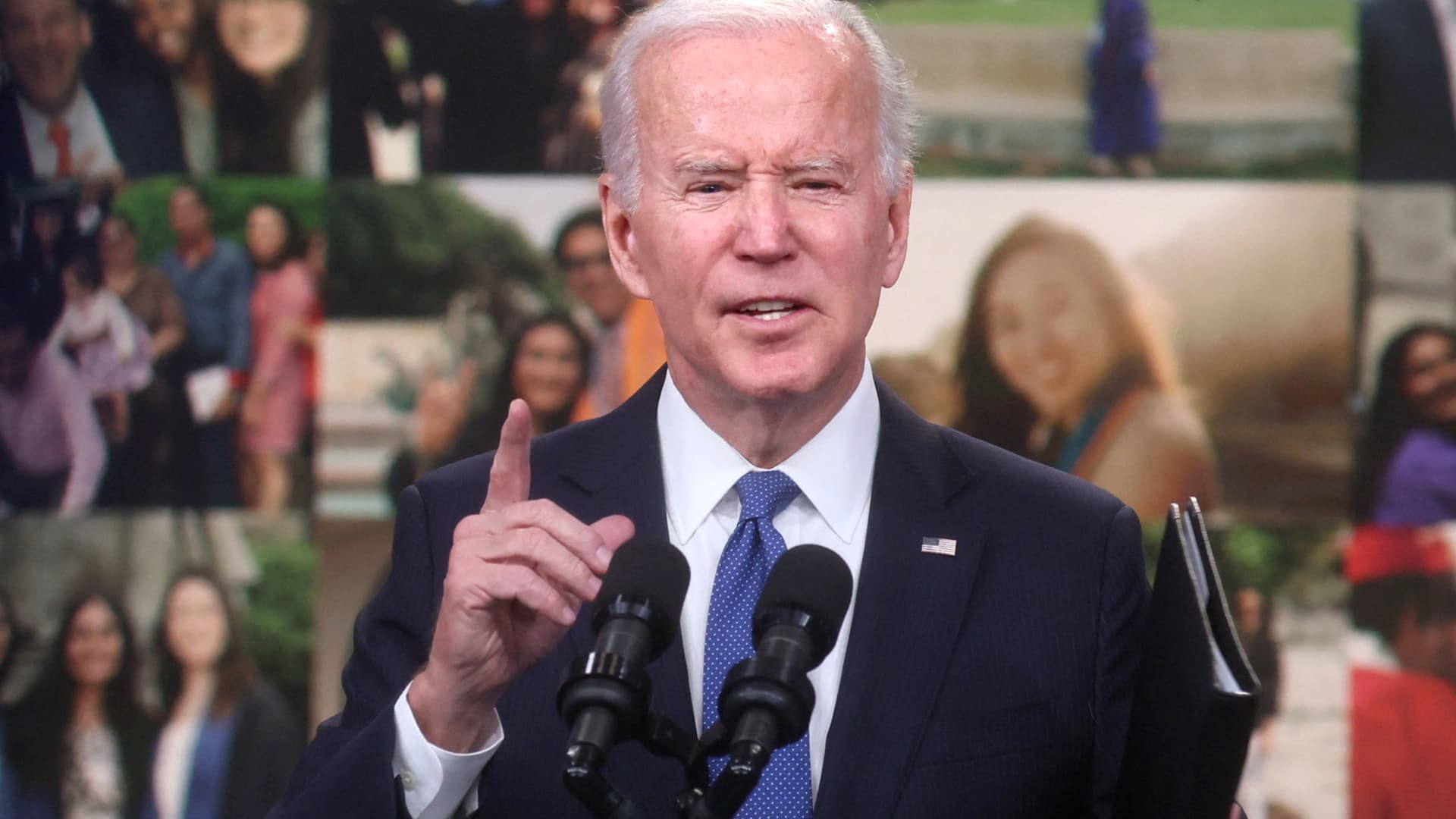More people with federal student loans have been able to walk away from their debt in bankruptcy court due to a Biden administration policy change announced last November.
In the fall of 2022, the U.S. Department of Education and the U.S. Department of Justice released updated bankruptcy guidelines to make it easier for struggling borrowers to get their student loans erased in court. Previously, it was difficult, if not impossible, for people to part with their education debt in a normal bankruptcy proceeding.
“I am thrilled that our one-year review indicates that our efforts have made a real difference in borrowers’ lives,” said Associate Attorney General Vanita Gupta, in a statement on Thursday.
More from Personal Finance:
UBS projects inflation is coming to an end
Here’s the inflation breakdown for October 2023
Donating a used car may be a charitable gift
In the first 10 months of the new policy, student loan borrowers filed more than 630 bankruptcy cases, a “significant increase” from recent years, the departments said.
“The vast majority of borrowers seeking discharge have received full or partial discharges,” they said.
Outstanding student debt in the U.S. exceeds $1.7 trillion, and around 7% of student loan borrowers have a balance of more than $100,000. Even before the Covid-19 pandemic, some 10 million borrowers were in delinquency or default.
Student debt had a high bar for bankruptcy discharge
Student loans were long treated differently than other types of debt in bankruptcy courts, garnering criticism from legal experts and consumer advocates.
Back in 2018, Federal Reserve chairman Jerome Powell said he was “at a loss to explain” why student loans couldn’t be discharged in bankruptcy. Powell also warned that the rising debt could slow down economic growth over time.
The difficulty of discharging student loans in bankruptcy dates back to the 1970s, when lawmakers added a stipulation that student loan borrowers had to wait at least five years after they began repayment to file for bankruptcy. That move came in response to concerns raised by policy makers and pundits that students would rack up a bunch of loans and then try to get rid of them after graduation.
Those fears were largely overblown, said higher education expert Mark Kantrowitz.
“Only borrowers who are facing extreme financial hardship seek to have their debt erased,” Kantrowitz said. “A bankruptcy discharge ruins your credit for seven years, preventing you from getting credit cards, auto loans and mortgages.”
Still, in 1990, the waiting period was upped to seven years. And the rules changed again almost a decade later, requiring that people with federal or private student loans prove that their debt poses an “undue hardship” to discharge it. Congress, however, never spelled out what that term means, and lawyers and advocates complained the uncertainty led to unfairness in the courts.
“The new policy represents a softening of the harsh stance on discharge of federal student loans,” Kantrowitz said. He added that the courts were now moving in the direction “of treating student loans like other debt.”
